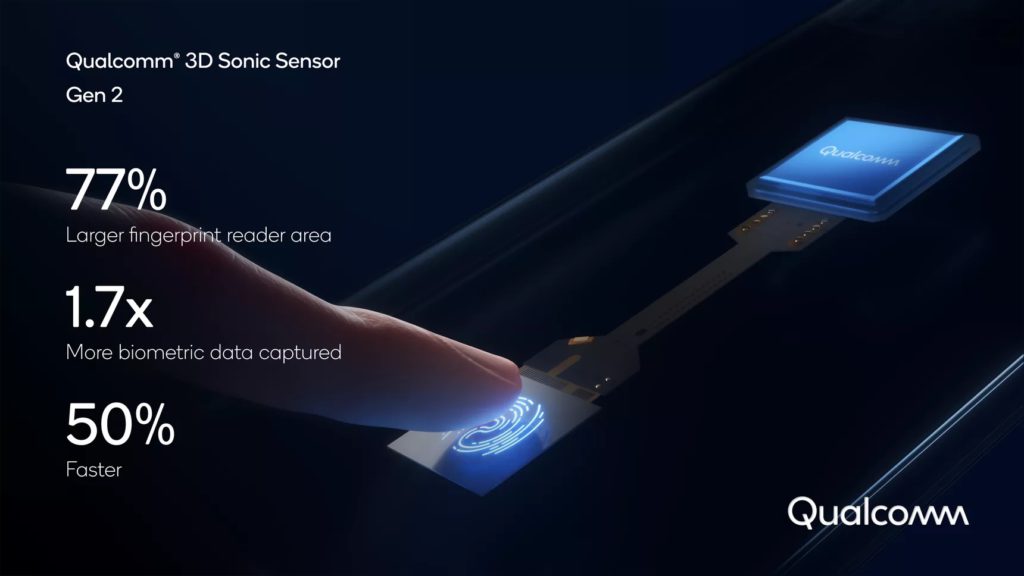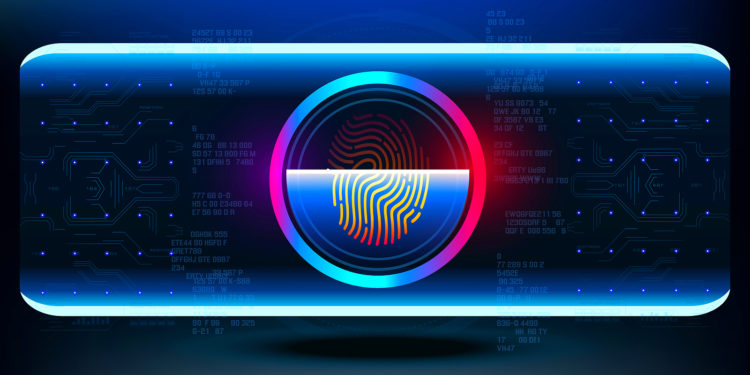At CES 2021, Qualcomm unveiled a new fingerprint sensor that can be placed under a smartphone display.
According to the company, the fingerprint sensor presented by Qualcomm is 50 percent faster and 77 percent larger than previous solutions. The new Qualcomm 3D Sonic Sensor Gen 2 is expected to be found in some high-end Android devices this year. But the 2021 iPhone could also benefit. Rumors suggest that Apple plans to integrate Touch ID alongside Face ID in this year's lineup. The fingerprint sensor could be placed either under the display or in the standby switch.
Qualcomm: New fingerprint sensor is 50 percent faster
Like The Verge reported, the new Qualcomm 3D Sonic Sensor measures 8mm x 8mm, compared to the 4mm x 9mm surface area of the previous generation. Qualcomm said that combined with the faster processor and larger sensor, performance with the Gen 2 should be 50 percent faster than its predecessor.
The new sensor is technically Qualcomm's third under-display ultrasonic fingerprint reader, following the original 3D Sonic Sensor and the 3D Sonic Max (launched in 2019) - which was effectively just a much larger version of the first-generation sensor but didn't feature any real speed improvements. While the 3D Sonic Sensor Gen 2 doesn't quite match the size of the 3D Sonic Max sensor (which measures a whopping 20mm x 30mm), the speed improvements should more than make up for it.

The 3D Sonic Sensor Gen 2 is expected to be used in smartphones such as the Galaxy S21 in the first half of 2021.
iPhone 2021: Analyst has promised Qualcomm technology
But the 2021 iPhone could also get this sensor. The reliable Apple analyst Ming-Chi Kuo reported in August 2019that the company will release an iPhone with both Face ID and Touch ID under the screen in 2021. Specifically, Kuo wrote that he expects Apple to use a "variant of Qualcomm's ultrasonic under-display fingerprint system." The details here are unclear, and it is not known whether Apple still plans to use some form of Qualcomm's technology or if it has developed its own. In addition, reliable leaker L0vetodream as well as Bloomberg have also suggested similar things.
More flexibility through the use of both techniques
Offering both Touch ID and Face ID would increase the overall convenience and speed of unlocking the iPhone. A user would register their fingerprints and facial profile. The iPhone could then be unlocked in either way. In times like these, Touch ID would prove particularly helpful, as Face ID is known to not work with face masks. Particularly security-conscious users could also use both biometric authentication methods, so that the iPhone only unlocks once both scans have been performed. (Photo by PALERMO89 / Bigstockphoto)





